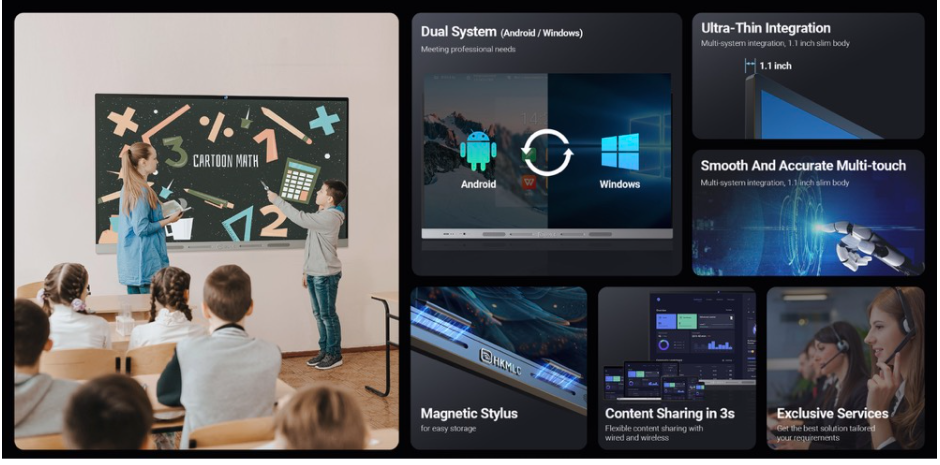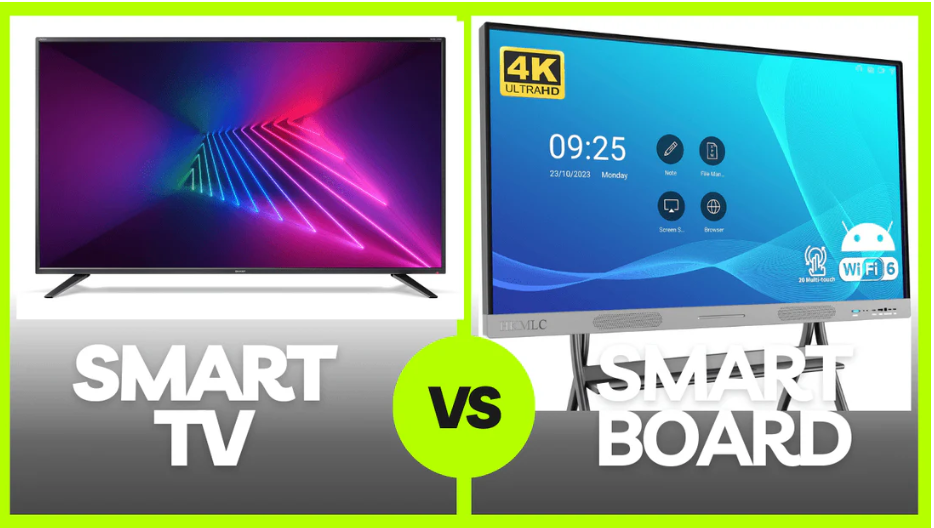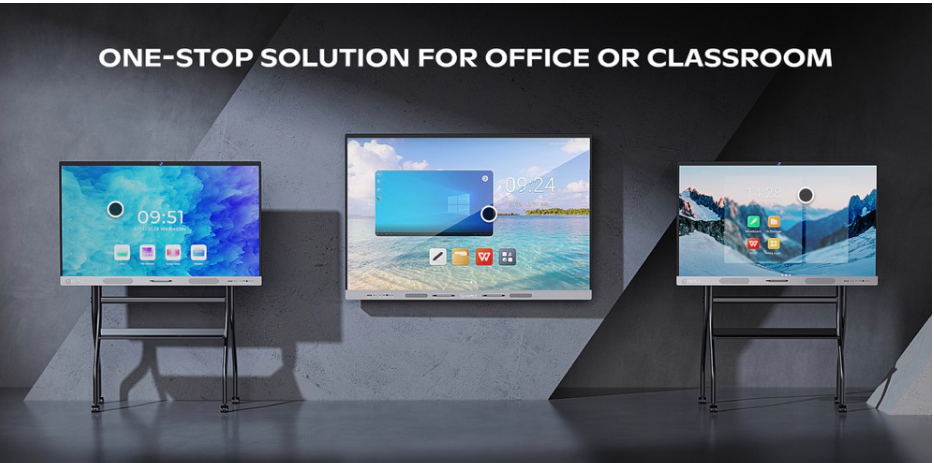Technology has transformed the way people teach, learn, and collaborate. Classrooms, meeting rooms, and even home learning spaces are no longer limited to chalkboards or basic projectors. Instead, interactive displays have taken center stage.
Among these, the smartboard has become a household name. However, with many different types of displays available today, it is important to understand what sets smartboards apart from other options.
What Exactly Is a Smartboard?
An HKMLC smart whiteboard is an interactive whiteboard that allows users to engage with digital content in real time. Unlike traditional whiteboards that require markers and erasers, a smartboard uses touch or stylus input to write, draw, or manipulate images directly on the screen.
The smartboard connects to a computer and often integrates with specialized software. This combination makes it possible to display lessons, videos, or presentations while allowing real time collaboration. A teacher can write math equations, move objects around for a science demonstration, or open websites directly from the board, making learning highly interactive.
What are Other Displays?
Other displays in classrooms or offices include projectors, flat panel televisions, interactive panels, and regular computer monitors. These displays vary in size, resolution, and interactivity. For instance:
- Projectors: Common in classrooms for decades, projectors display images on large screens but typically require a separate device to control content.
- Flat Panel Displays: High definition TVs or monitors can be used to present slides, videos, or data, but they often lack interactivity.
- Interactive Panels: These are similar to smartboards but differ in software, price, and specific features. They may rely on multi touch technology or external hardware.
While all these displays serve the purpose of showing visual content, they differ in how users interact with them and how effectively they support collaboration.
Interactivity: The Key Difference
The main factor that sets a smartboard apart is interactivity.
- Smartboards: Users can write, highlight, draw, and move items on the screen with their fingers or a digital pen. They allow multiple users to interact at the same time, which is perfect for collaborative group work.
- Other Displays: Projectors and flat panels usually do not allow direct interaction. Instead, they act as passive displays controlled by a laptop or remote. Interactive panels can sometimes match smartboards in interactivity but may not offer the same software integration.
This interactivity makes smartboards particularly powerful in education, where engaging students is crucial. Students can physically participate by solving problems on the board or adding input to group projects.
Software Integration
Another big difference lies in software compatibility.
- Smartboards: Typically come with dedicated software designed for teaching or collaboration. Teachers can save lessons, create interactive quizzes, and import multimedia with ease. Smartboards often integrate seamlessly with tools like PowerPoint, Google Classroom, and educational apps.
- Other Displays: While projectors and flat screens can show anything that a computer outputs, they lack specialized interactive software. Interactive panels may include some built in programs, but they are not always as comprehensive as those provided with a smartboard.
This integration makes a smartboard more than just a display. It becomes a complete teaching and collaboration solution.
Cost Considerations
Price is often a deciding factor when choosing between a smartboard and other displays.
- Smartboards: Usually more expensive upfront because they combine hardware with interactive software. They also require accessories such as styluses and may need professional installation.
- Other Displays: Projectors and flat screens tend to cost less initially. However, projectors may require ongoing expenses for replacement bulbs and screens. Interactive panels may be priced closer to smartboards, depending on features.
While smartboards cost more, many schools and organizations see them as a long term investment because of their ability to improve engagement and learning outcomes.
 Ease of Use
Ease of Use
Ease of use is another area where differences appear.
- Smartboards: Once set up, they are relatively straightforward. Users can switch between writing on the board, browsing the web, or opening files with a few taps. However, they require training to maximize their potential.
- Other Displays: Projectors and flat panels are simple to operate since they mainly act as output devices. Interactive panels fall somewhere in between, offering touch capabilities but sometimes requiring additional learning for advanced functions.
For classrooms or offices with users who may not be tech savvy, simpler displays might feel less intimidating. But for those willing to learn, a smartboard offers far greater possibilities.
Versatility
When it comes to versatility, smartboards again stand out.
- Smartboards: Suitable for classrooms, corporate meetings, brainstorming sessions, and even creative industries. They support multiple media formats, encourage real time collaboration, and work well for both in person and hybrid setups.
- Other Displays: Projectors are better for large audiences in lecture style setups but do not support interaction. Flat panels are excellent for high resolution video or data but are not collaborative tools. Interactive panels offer versatility too but may lack the software ecosystem of a smartboard.
This versatility makes smartboards appealing to institutions that want a single tool to cover multiple needs.
Classroom Impact
Smartboards have had a significant influence on education. Students today are used to tablets, smartphones, and interactive apps. A smartboard extends that familiarity into the classroom, making lessons more engaging. Teachers can demonstrate complex concepts visually, annotate in real time, and involve students directly.
Other displays, while effective for showing videos or slides, do not engage students in the same way. They tend to create a one way flow of information from teacher to student. By contrast, smartboards encourage participation and collaboration.
Office and Business Impact
In offices, smartboards support brainstorming sessions, virtual meetings, and collaborative projects. Team members can annotate documents together, save notes instantly, and share updates with remote colleagues.
Other displays serve well for presentations and video conferences but often lack the interactive features that drive active participation. For companies seeking greater engagement and productivity, a smartboard can make a noticeable difference.
Maintenance and Longevity
Maintenance is another factor to consider.
- Smartboards: Require occasional calibration and software updates. Touch surfaces need to be cleaned regularly to maintain responsiveness.
- Projectors: Often need replacement bulbs and filters.
- Flat Panels and Interactive Panels: Generally low maintenance but may require servicing if touch functions fail.
Overall, smartboards are durable when properly maintained, making them a reliable option for long term use.
The Role of Training and Support
One aspect that often goes overlooked is training. Smartboards require users to understand their full range of functions to be effective. Institutions that provide training see much higher levels of satisfaction and productivity.
Other displays, being simpler, may not require the same investment in training but also do not offer the same potential benefits.
The Future of Interactive Displays
As technology continues to evolve, the line between smartboards and other displays is becoming blurred. Interactive panels are gaining popularity, and software is improving across all platforms. Still, the smartboard retains its reputation as a leader in interactive education and business communication.
Future models are likely to include even more advanced features, such as artificial intelligence integration, improved gesture recognition, and cloud based collaboration.
Making the Right Choice
When deciding between a smartboard and another display, consider the following questions:
- Do you need interactivity or just a display?
- Is the investment justified by the level of engagement required?
- Will users be trained to maximize the tool’s potential?
- What is your long term budget for maintenance and upgrades?
By answering these questions, schools and businesses can select the display that best fits their needs.
Final Thoughts
Smartboards and other displays each have unique strengths. A smartboard offers interactivity, versatility, and dedicated software that enhance both teaching and collaboration. Other displays such as projectors, flat panels, and interactive screens can be more affordable and easier to use but often lack the same depth of engagement.
For organizations and classrooms that value participation and dynamic communication, investing in a smartboard is a forward thinking choice. Tools like the HKMLC smartboard demonstrate how technology can bridge the gap between traditional teaching and modern interactive learning.
Ultimately, the right choice depends on your specific goals, audience, and budget. What remains clear is that interactive displays are no longer optional luxuries but essential tools in today’s connected world.








